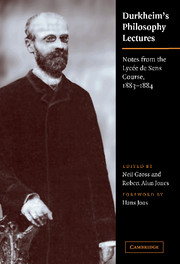Book contents
- Frontmatter
- Contents
- Foreword
- Translators' Note
- Acknowledgments
- Introduction
- Part I Preliminary Matters
- Part II Psychology
- 5 The Object and Method of Psychology
- 6 Faculties of the Soul
- 7 On Pleasure and Pain
- 8 The Inclinations
- 9 The Emotions and Passions
- 10 Theory of Knowledge
- 11 External Perception and Its Conditions. The Senses
- 12 External Perception. The Origin of the Idea of Externality
- 13 External Perception. On the Objectivity of the Idea of Externality. (1) Does the External World Exist?
- 14 External Perception. On the Objectivity of the Idea of Externality. (2) On the Nature of the External World
- 15 Consciousness. On the Conditions of Consciousness
- 16 Consciousness. On the Origin of the Idea of the Self
- 17 Consciousness. On the Nature of the Self
- 18 Reason. The Definition of Reason
- 19 Reason. The Material of Reason. (1) Principles of Reason
- 20 Reason. The Material of Reason (2) Rational or First Ideas
- 21 Reason. Empiricism
- 22 Reason. Evolutionism. The Theory of Heredity
- 23 Reason. On the Objectivity of Rational Principles
- 24 Faculties of Conception. On the Association of Ideas
- 25 Faculties of Conception. Memory
- 26 Faculties of Conception. Imagination
- 27 Faculties of Conception. Sleep. Dreams. Madness
- 28 Complex Operations of the Mind. Attention. Comparison. Abstraction
- 29 Complex Operations of the Mind. Generalization. Judgment. Reasoning
- 30 The Object and Method of Aesthetics
- 31 What Is Beauty?
- 32 Prettiness and the Sublime. Art
- 33 On Activity in General. Instinct
- 34 Habit
- 35 On the Will and on Freedom
- 36 On Freedom (Continued). Psychological Determinism
- 37 On Freedom (Conclusion). Scientific Determinism. Theological Fatalism
- Part III Logic
- Part IV Ethics
- Part V Metaphysics
- Appendix: Biographical Glossary
- Index
31 - What Is Beauty?
Published online by Cambridge University Press: 21 October 2009
- Frontmatter
- Contents
- Foreword
- Translators' Note
- Acknowledgments
- Introduction
- Part I Preliminary Matters
- Part II Psychology
- 5 The Object and Method of Psychology
- 6 Faculties of the Soul
- 7 On Pleasure and Pain
- 8 The Inclinations
- 9 The Emotions and Passions
- 10 Theory of Knowledge
- 11 External Perception and Its Conditions. The Senses
- 12 External Perception. The Origin of the Idea of Externality
- 13 External Perception. On the Objectivity of the Idea of Externality. (1) Does the External World Exist?
- 14 External Perception. On the Objectivity of the Idea of Externality. (2) On the Nature of the External World
- 15 Consciousness. On the Conditions of Consciousness
- 16 Consciousness. On the Origin of the Idea of the Self
- 17 Consciousness. On the Nature of the Self
- 18 Reason. The Definition of Reason
- 19 Reason. The Material of Reason. (1) Principles of Reason
- 20 Reason. The Material of Reason (2) Rational or First Ideas
- 21 Reason. Empiricism
- 22 Reason. Evolutionism. The Theory of Heredity
- 23 Reason. On the Objectivity of Rational Principles
- 24 Faculties of Conception. On the Association of Ideas
- 25 Faculties of Conception. Memory
- 26 Faculties of Conception. Imagination
- 27 Faculties of Conception. Sleep. Dreams. Madness
- 28 Complex Operations of the Mind. Attention. Comparison. Abstraction
- 29 Complex Operations of the Mind. Generalization. Judgment. Reasoning
- 30 The Object and Method of Aesthetics
- 31 What Is Beauty?
- 32 Prettiness and the Sublime. Art
- 33 On Activity in General. Instinct
- 34 Habit
- 35 On the Will and on Freedom
- 36 On Freedom (Continued). Psychological Determinism
- 37 On Freedom (Conclusion). Scientific Determinism. Theological Fatalism
- Part III Logic
- Part IV Ethics
- Part V Metaphysics
- Appendix: Biographical Glossary
- Index
Summary
Now that we've examined the effects of beauty, or aesthetic emotion, we'll try to find its cause. In other words, we'll try to deduce from the various qualities of aesthetic pleasure the qualities that its object – beauty – must have.
The first thing we know is that self-interest plays no role in aesthetic emotion. We can only be truly disinterested in an object if it has no concrete reality, for anything that really exists always has a certain utility – if only that of being agreeable. When we see such an object, it immediately inspires an ulterior motive – we want to keep it for ourselves. Yet beauty generates no such motive, so beauty can't be real. Indeed, it's nothing but a concept, an ideal formed by the mind.
We've also said that aesthetic emotion is pleasurable. Pleasure is produced by the effect, on our minds, of an object that conforms to its nature (pain results in the opposite case). The only thing we know is ourselves, and we judge all objects according to their relationships with us. So if aesthetic emotion is pleasurable, it must be that beauty conforms to our nature.
In beauty, therefore, there must be something of human nature. This is what Saint-Marc Girardin quite rightly acknowledged in his course on dramatic literature. What we look for in art is something of ourselves. A landscape isn't beautiful in itself.
- Type
- Chapter
- Information
- Durkheim's Philosophy LecturesNotes from the Lycée de Sens Course, 1883–1884, pp. 142 - 144Publisher: Cambridge University PressPrint publication year: 2004



